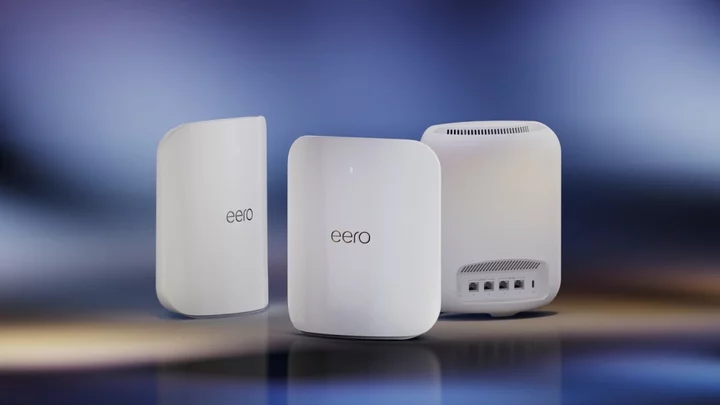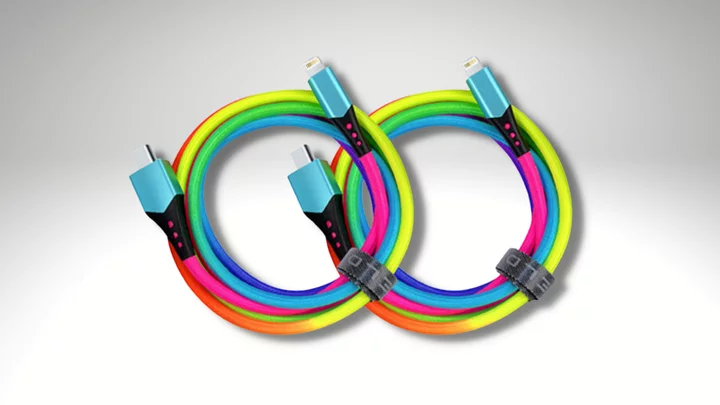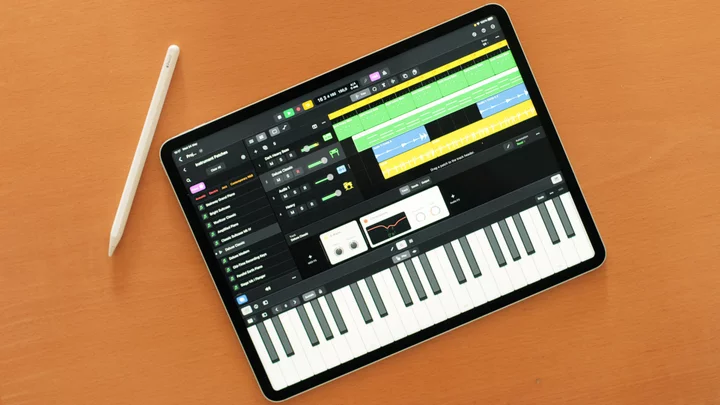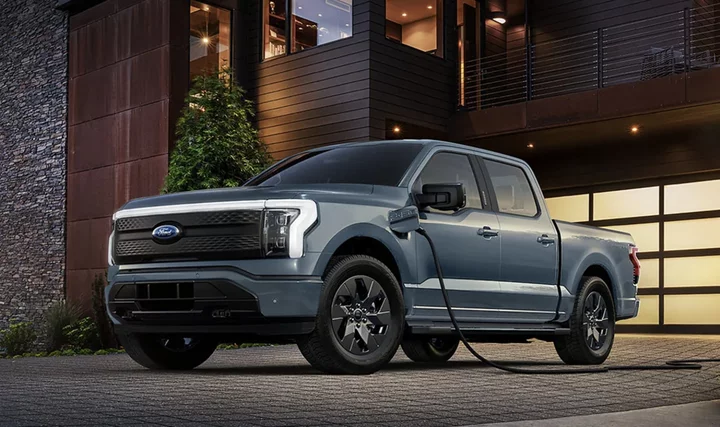Eero’s latest whole-home mesh system, the Max 7, is its first Wi-Fi 7 offering. As with other Eero mesh systems, it’s very easy to install and manage using the Eero mobile app. You don’t get the low-profile nodes that make previous Eero products like the Eero 6+ so distinctive, and you’ll have to pay extra for parental control and network security software, but the two-piece Max 7 system reviewed here turned in speedy throughput scores and provided wide signal coverage in our tests. At $1,149.99 for 5,000 square feet of coverage, it’s more expensive than the TP-Link Deco BE85 two-pack ($999.99) but its ability to control Zigbee and Matter smart home devices and work as a Thread border router help earn it an Editors’ Choice award for the best Wi-Fi 7 mesh system.
Design: Going Big
In addition to the two-node Max 7 version reviewed here, Eero (owned by Amazon) offers two other options. For bigger homes, the $1,699.99 three-piece system provides 7,500 square feet of coverage, while a $599.99 one-piece system covers 2,500 square feet.
Whereas previous Eero systems such as the Eero Pro 6E and the Eero 6+ use low-profile nodes, the Max 7 uses much larger nodes that stand 8.7 inches high, 7.2 inches wide, and 3.5 inches deep. The nodes are white and have an Eero logo and a status LED on the front. The LED is solid white when the node is online, flashes white while connecting, flashes blue during Bluetooth pairing, is solid red when the node is offline, and flashes red when it is resetting.
You get two auto-sensing 10GbE networking ports and two auto-sensing 2.5GbE networking ports around back, along with a WPS button and a USB-C power port. Missing is a USB port that can be used for connecting external devices. The Max 7 supports both wireless and wired backhaul, so if your home setup allows you to connect them with an Ethernet cable, it can handle communications between nodes and free up wireless bandwidth for client traffic. Each node is equipped with 10 high-performance Wi-Fi antennas, one smart home antenna, Zigbee and Bluetooth radios, a quad-core CPU, 2GB of RAM, and 4GB of flash storage.
This is a tri-band BE20800 system, which means that it can hit maximum theoretical transmission rates of up to 574Mbps on the 2.4GHz band, up to 8,677Mbps on the 5GHz band, and up to 11,529Mbps on the 6GHz band, for a total of just under 20,800Mbps. It supports the latest Wi-Fi 7 (802.11be) technologies, including 6GHz transmissions, 4x4 MU-MIMO streaming, direct-to-client beamforming, WPA3 encryption, Orthogonal Frequency-Division Multiple Access (OFDMA) data transmissions, 4K-QAM, and 320MHz channels. The Eero Max 7 also supports Multi-Link Operation (MLO), one of the key improvements of Wi-Fi 7 over earlier versions, but this feature is currently disabled since it requires client support and so few clients have that currently.
(Credit: Eero)The Max 7 works as a Thread border router, which allows you to create a network for Thread-compatible smart home devices and connect it to your Wi-Fi network. It also supports the Matter standard, which allows smart home devices from various manufacturers to work with one another. Rounding out the Max 7's smart capabilities are a Zigbee radio for controlling Zigbee-enabled devices, and support for Alexa voice commands.
You can create Wi-Fi schedules, set up a guest network, and use the Max 7 as a smart home hub out of the box, but you’ll need an Eero Plus subscription to add parental control and network security features. The subscription gets you access to content filters, ad blocking, VPN protection powered by Guardian, Malwarebytes anti-malware protection, and 1Password password protection. You get a free six-month trial of Eero Plus, and after that it’ll cost you $9.99 per month or $99.99 per year.
(Credit: Eero)The Max 7 uses the same thoughtfully designed mobile app as previous Eero models. The Home screen has panels for Internet and for each node, as well as a Profiles panel and a Recently Online panel. When you tap the Internet panel, you can run a speed test and enable Internet Backup (if you have an Eero Plus subscription), which allows you to connect your Eero network to a mobile hotspot like your phone if your internet service provider experiences an outage.
Tap any node panel to see how it is connected (wired or wireless), the data rate, the available Wi-Fi radios, the number of connected devices, and the IP address. The Profiles panel lists any profiles you’ve created. Tap any profile to add client devices, block access, and configure filters. The Recently Online panel shows client devices that have recently connected to the network.
At the very bottom of the screen are Home, Activity, Discover, and Settings buttons. Tap Home to return to the Home screen from anywhere in the app, and tap the Activity button to view historical graphs of downloaded and uploaded data usage, as well as the fastest download and upload speeds. The Discover button takes you to a screen where you can subscribe to an Eero Plus plan, link to an Amazon account, and try out new beta features such as local DNS caching and optimizing traffic for gaming.
Testing the Eero Max 7: Seriously Speedy
I had the Max 7 up and running in no time. I already have an Eero account, so I opened the app, tapped the + icon in the upper right corner, and tapped Add a Network. I followed the instructions to unplug my modem, connect an Eero node to the modem, and power up both devices. The LED began blinking blue, and after several seconds I was prompted to give the router a name and create a name and password for the new network. After a minute, the router was connected, and I was prompted to place the nodes in their respective locations and plug them in. I waited another minute or so for the nodes to connect, and updated the firmware to complete the installation.
The Max 7 achieved solid results on our throughput performance tests. The router node’s score of 2,149Mbps on the close-proximity test was faster than the TP-Link Deco BE85 router (2,085Mbps) but not quite as fast as the Netgear Orbi 970 Series (2,209Mbps). At a distance of 30 feet, the Max 7 router’s score of 770Mbps fell just short of the TP-Link Deco BE85 router’s score of 779Mbps. Once again the Netgear Orbi system took top honors, here with a score of 916Mbps.
The Max 7 satellite node’s score of 1,795Mbps on the close-proximity test was faster than the Netgear Orbi satellite’s score of 1,470Mbps, but it couldn’t match the TP-Link Deco BE85 satellite’s score of 1,922Mbps. On the 30-foot test, the Max 7 satellite led with a score of 1,062Mbps, while the Netgear Orbi and TP-Link Deco BE85 satellites scored 1,040Mbps and 999Mbps, respectively.
To test wireless signal strength, we use an Ekahau Sidekick 2 Wi-Fi diagnostic device and Ekahau’s Survey mobile app, which generate heat maps that illustrate the router and satellite node’s signal strength throughout our test home. (Note: Ekahau is owned by Ziff Davis, the publisher of PCMag.) The circles on the map represent the location of the router and the satellite, and the colors represent signal strength.
(Credit: Ekahau)Dark green areas indicate the strongest signal, and lighter yellow areas indicate a weaker signal. Gray areas indicate a very weak signal or no measurable signal reception. As shown on the map, the Max 7 had no trouble providing a strong Wi-Fi signal to all corners of the house.
Verdict: The Best of the Initial Wi-Fi 7 Crop
With the Eero Max 7, you get speedy Wi-Fi 7 throughput, a nice assortment of high-speed ports, and a user-friendly mobile app. Installation is a snap, and support for the latest home automation technologies makes it an excellent choice for anyone looking to outfit their home with Thread, Matter, and Zigbee devices.
All of this earns the Max 7 our Editors’ Choice award for Wi-Fi 7 mesh systems. Still, the expense of Wi-Fi 7 routers and the infancy of the standard means the Max 7 isn't the best option for many households. If you’re not willing to fork over $1,499.99 to tinker with a wireless standard that is still in its infancy, you’ll save a bundle with the Eero Pro 6E system, which is also an Editors' Choice award winner. Of course, if you go that route, you won’t get anywhere near the speed of the Max 7, nor will you get Wi-Fi 7 technologies and 10GbE wired networking. The leading edge has its price.









